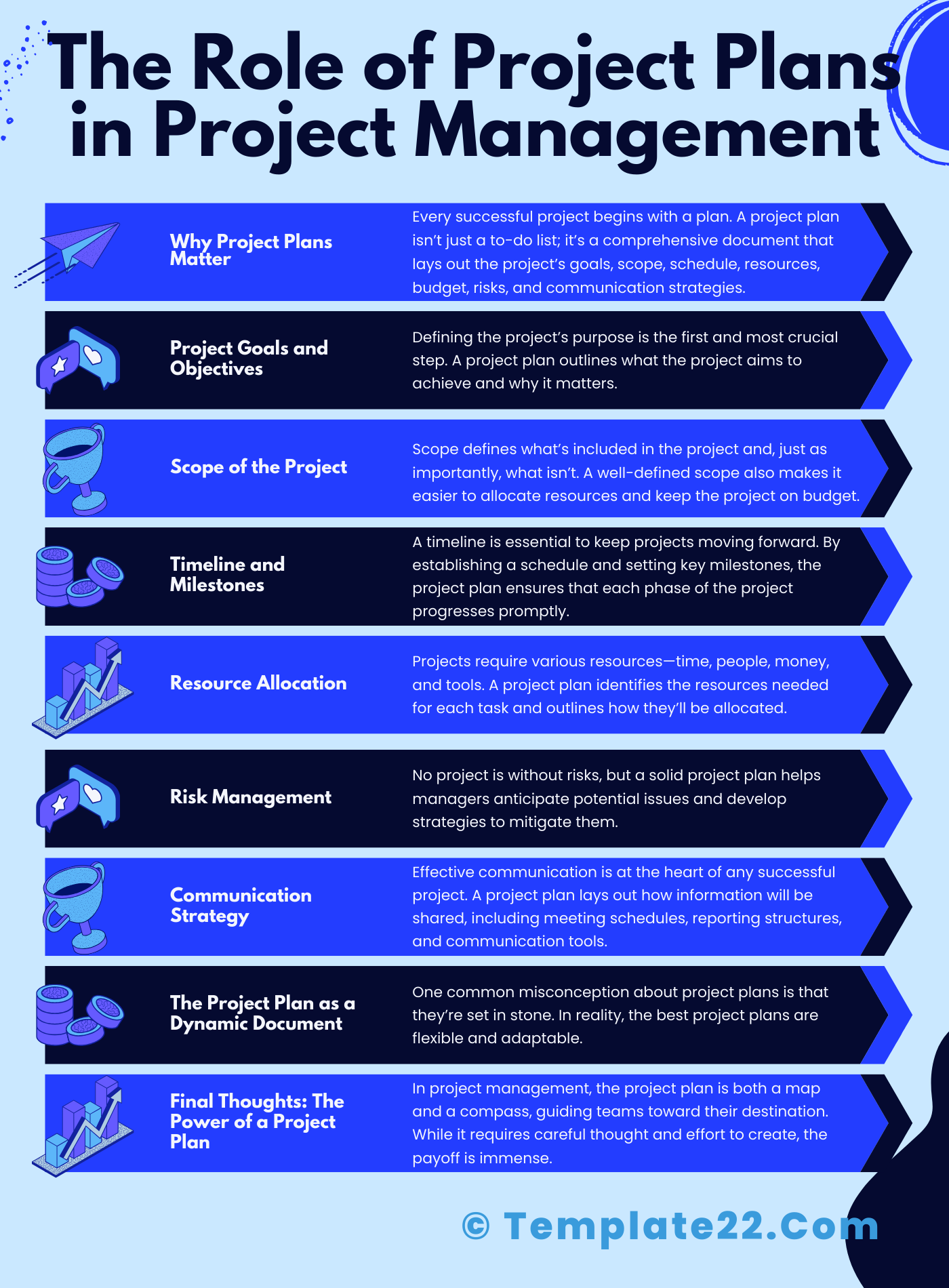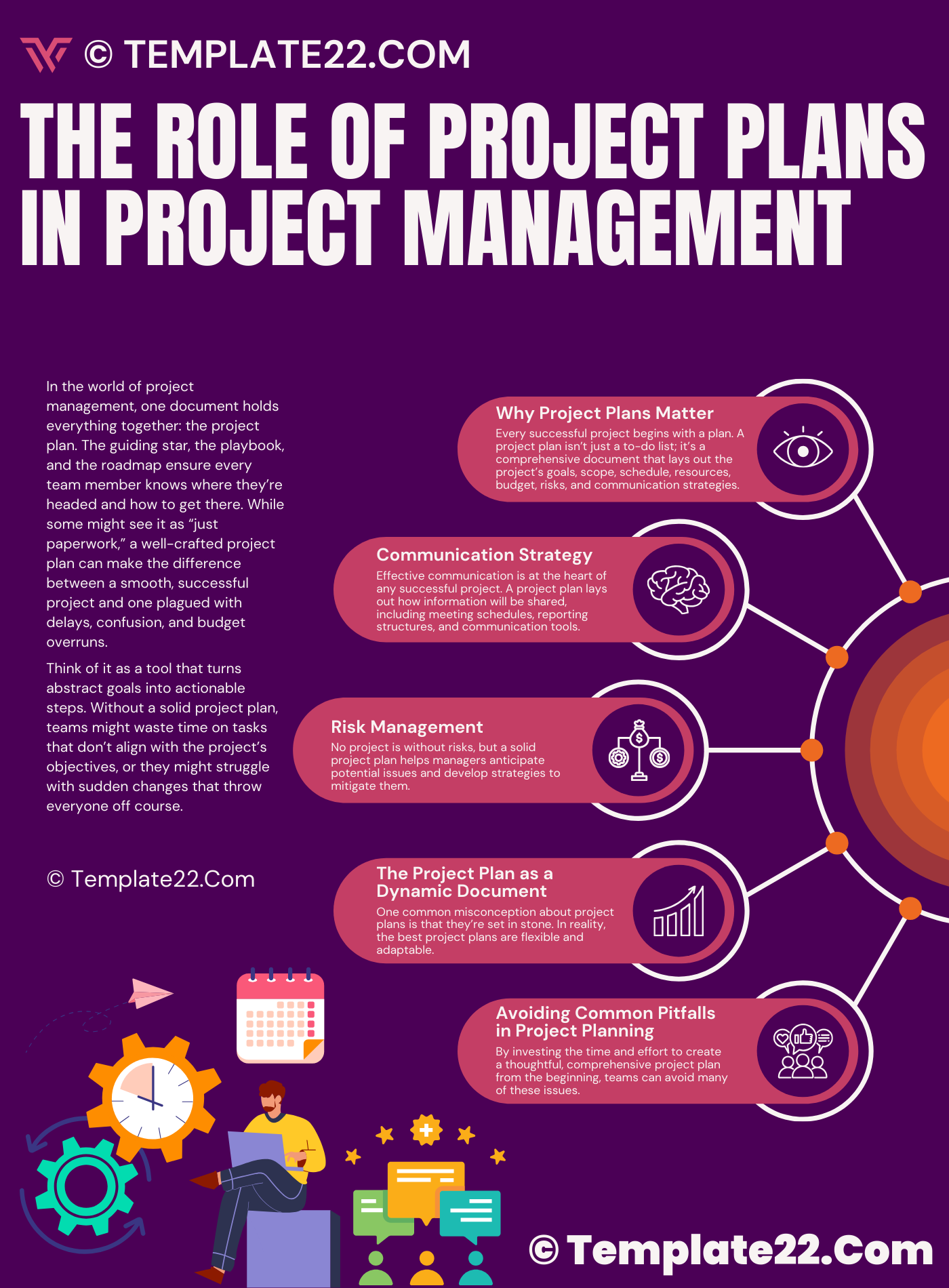 In the world of project management, one document holds everything together: the project plan. The guiding star, the playbook, and the roadmap ensure every team member knows where they’re headed and how to get there. While some might see it as “just paperwork,” a well-crafted project plan can make the difference between a smooth, successful project and one plagued with delays, confusion, and budget overruns.
In the world of project management, one document holds everything together: the project plan. The guiding star, the playbook, and the roadmap ensure every team member knows where they’re headed and how to get there. While some might see it as “just paperwork,” a well-crafted project plan can make the difference between a smooth, successful project and one plagued with delays, confusion, and budget overruns.
Why Project Plans Matter
Every successful project begins with a plan. A project plan isn’t just a to-do list; it’s a comprehensive document that lays out the project’s goals, scope, schedule, resources, budget, risks, and communication strategies. By providing a clear blueprint, a project plan helps managers anticipate challenges, avoid misunderstandings, and stay on track.
Think of it as a tool that turns abstract goals into actionable steps. Without a solid project plan, teams might waste time on tasks that don’t align with the project’s objectives, or they might struggle with sudden changes that throw everyone off course.
Breaking Down the Elements of a Project Plan
A strong project plan includes several essential components that keep the project organized and focused. Here’s a look at what these components are and why each one is critical to project success:
1. Project Goals and Objectives
Defining the project’s purpose is the first and most crucial step. A project plan outlines what the project aims to achieve and why it matters. Clear goals give team members a sense of direction and help them understand the project’s importance, motivating them to give their best.
2. Scope of the Project
Scope defines what’s included in the project and, just as importantly, what isn’t. By setting boundaries around what the team is expected to deliver, the project plan prevents “scope creep”—the tendency for projects to expand in unplanned ways. A well-defined scope also makes it easier to allocate resources and keep the project on budget.
CLICK HERE TO DOWNLOAD 300+ PROJECT MANAGEMENT TEMPLATES & DOCUMENTS IN EXCEL
3. Timeline and Milestones
A timeline is essential to keep projects moving forward. By establishing a schedule and setting key milestones, the project plan ensures that each phase of the project progresses promptly. Milestones are also a great way to celebrate small wins, keeping morale high and the team motivated.
4. Resource Allocation
Projects require various resources—time, people, money, and tools. A project plan identifies the resources needed for each task and outlines how they’ll be allocated. This ensures that no resource is overextended and that the team has everything it needs to complete the project successfully.
5. Risk Management
No project is without risks, but a solid project plan helps managers anticipate potential issues and develop strategies to mitigate them. From supply chain delays to personnel changes, listing potential risks and responses makes it easier to handle challenges without derailing the entire project.
6. Communication Strategy
Effective communication is at the heart of any successful project. A project plan lays out how information will be shared, including meeting schedules, reporting structures, and communication tools. This ensures that everyone is on the same page and that updates are timely and clear.
The Project Plan as a Dynamic Document
One common misconception about project plans is that they’re set in stone. In reality, the best project plans are flexible and adaptable. Project managers should review and update the plan regularly, especially if the project encounters unexpected challenges. By treating the plan as a living document, teams can adjust course as needed, keeping the project aligned with its goals.
How a Good Project Plan Enhances Team Collaboration
A project plan doesn’t just benefit project managers; it helps the entire team work better together. With a clear plan in place, team members know exactly what’s expected of them, reducing confusion and minimizing the need for constant clarification. When everyone understands their roles, responsibilities, and timelines, collaboration becomes more seamless, leading to a more productive work environment.
CLICK HERE TO DOWNLOAD 300+ PROJECT MANAGEMENT TEMPLATES & DOCUMENTS IN EXCEL
Avoiding Common Pitfalls in Project Planning
Despite its importance, project planning is often overlooked or rushed, leading to issues down the line. Common mistakes include setting unrealistic deadlines, failing to account for potential risks, and neglecting the importance of regular check-ins. By investing the time and effort to create a thoughtful, comprehensive project plan from the beginning, teams can avoid many of these issues.
Final Thoughts: The Power of a Project Plan
In project management, the project plan is both a map and a compass, guiding teams toward their destination. While it requires careful thought and effort to create, the payoff is immense. A strong project plan not only increases the chances of success but also builds a foundation of trust, transparency, and collaboration within the team.
The next time you embark on a project, remember that a well-laid plan is more than just a document—it’s a key to unlocking your project’s full potential.
